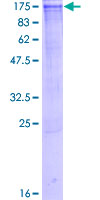order histories, retained contact details for faster checkout, review submissions, and special promotions.
Forgot password?
order histories, retained contact details for faster checkout, review submissions, and special promotions.
Locations
Orders Processing,
Shipping & Receiving,
Warehouse
2 Shaker Rd Suites
B001/B101
Shirley, MA 01464
Production Lab
Floor 6, Suite 620
20700 44th Avenue W
Lynnwood, WA 98036
Telephone Numbers
Tel: +1 (206) 374-1102
Fax: +1 (206) 577-4565
Contact Us
Additional Contact Details
order histories, retained contact details for faster checkout, review submissions, and special promotions.
Forgot password?
order histories, retained contact details for faster checkout, review submissions, and special promotions.
ATP2A2 / SERCA2
ATPase, Ca++ transporting, cardiac muscle, slow twitch 2
ATP2a2 (Ca++ Transporting, Cardiac Muscle, Slow Twitch 2 ATPase), also known as SERCA2 (Sarcoplasmic reticulum Ca(2+)-ATPase 2), belongs to the large family of P-type cation pumps that couple ATP hydrolysis with cation transport across membranes. The ATP2a2 pump maintains low cytosolic Ca(2+) concentrations by actively transporting Ca(2+) from the cytosol into the sarco/endoplasmic reticulum lumen. Experiments on ATP2a2-null mice demonstrate that this enzyme may be important for the cardiac function. Germ-line mutations in ATP2a2 are the cause of the Darier-White disease (keratosis follicularis), which is characterized by warty papules and plaques in seborrheic areas (central trunk, flexures, scalp, and forehead), palmoplantar pits, and distinctive nail abnormalities.
| Gene Name: | ATPase, Ca++ transporting, cardiac muscle, slow twitch 2 |
| Family/Subfamily: | Transporter , ATPase - P type, type IIA |
| Synonyms: | ATP2A2, ATP2B, Calcium pump 2, DAR, SR Ca(2+)-ATPase 2, Cardiac Ca2+ ATPase, DD, SERCA2 |
| Target Sequences: | NM_001681 NP_001672.1 P16615 |
Publications (2)



If you do not find the reagent or information you require, please contact Customer.Support@LSBio.com to inquire about additional products in development.









